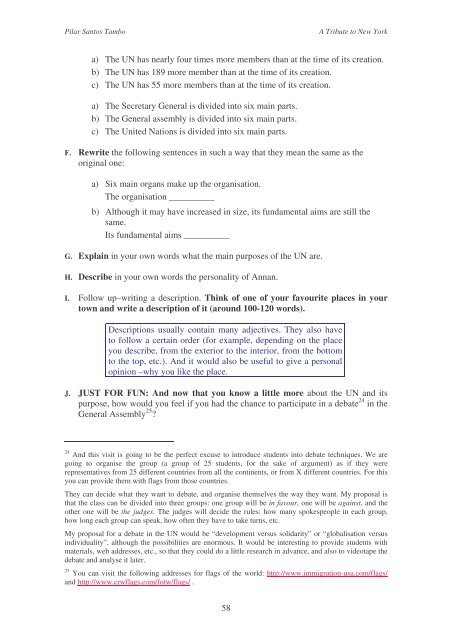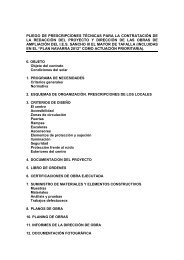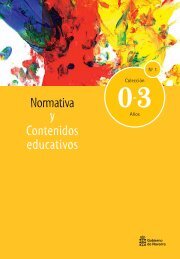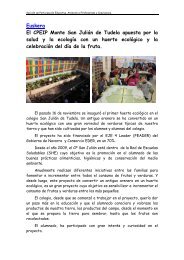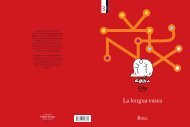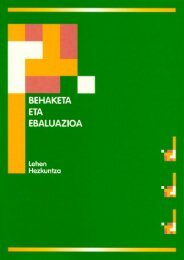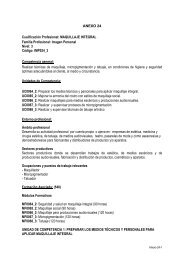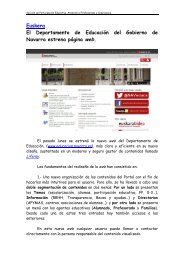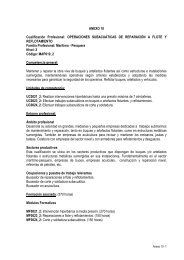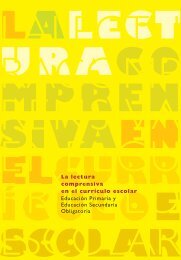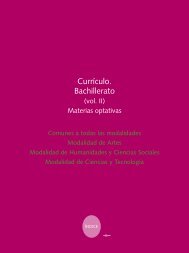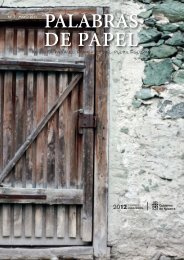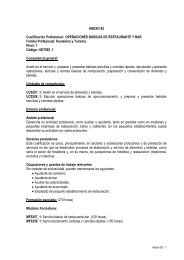A Tribute to New York - Navarra
A Tribute to New York - Navarra
A Tribute to New York - Navarra
Create successful ePaper yourself
Turn your PDF publications into a flip-book with our unique Google optimized e-Paper software.
Pilar San<strong>to</strong>s Tambo A <strong>Tribute</strong> <strong>to</strong> <strong>New</strong> <strong>York</strong><br />
a) The UN has nearly four times more members than at the time of its creation.<br />
b) The UN has 189 more member than at the time of its creation.<br />
c) The UN has 55 more members than at the time of its creation.<br />
a) The Secretary General is divided in<strong>to</strong> six main parts.<br />
b) The General assembly is divided in<strong>to</strong> six main parts.<br />
c) The United Nations is divided in<strong>to</strong> six main parts.<br />
F. Rewrite the following sentences in such a way that they mean the same as the<br />
original one:<br />
a) Six main organs make up the organisation.<br />
The organisation __________<br />
b) Although it may have increased in size, its fundamental aims are still the<br />
same.<br />
Its fundamental aims __________<br />
G. Explain in your own words what the main purposes of the UN are.<br />
H. Describe in your own words the personality of Annan.<br />
I. Follow up–writing a description. Think of one of your favourite places in your<br />
<strong>to</strong>wn and write a description of it (around 100-120 words).<br />
Descriptions usually contain many adjectives. They also have<br />
<strong>to</strong> follow a certain order (for example, depending on the place<br />
you describe, from the exterior <strong>to</strong> the interior, from the bot<strong>to</strong>m<br />
<strong>to</strong> the <strong>to</strong>p, etc.). And it would also be useful <strong>to</strong> give a personal<br />
opinion –why you like the place.<br />
J. JUST FOR FUN: And now that you know a little more about the UN and its<br />
purpose, how would you feel if you had the chance <strong>to</strong> participate in a debate 24 in the<br />
General Assembly 25 ?<br />
24 And this visit is going <strong>to</strong> be the perfect excuse <strong>to</strong> introduce students in<strong>to</strong> debate techniques. We are<br />
going <strong>to</strong> organise the group (a group of 25 students, for the sake of argument) as if they were<br />
representatives from 25 different countries from all the continents, or from X different countries. For this<br />
you can provide them with flags from those countries.<br />
They can decide what they want <strong>to</strong> debate, and organise themselves the way they want. My proposal is<br />
that the class can be divided in<strong>to</strong> three groups: one group will be in favour, one will be against, and the<br />
other one will be the judges. The judges will decide the rules: how many spokespeople in each group,<br />
how long each group can speak, how often they have <strong>to</strong> take turns, etc.<br />
My proposal for a debate in the UN would be “development versus solidarity” or “globalisation versus<br />
individuality”, although the possibilities are enormous. It would be interesting <strong>to</strong> provide students with<br />
materials, web addresses, etc., so that they could do a little research in advance, and also <strong>to</strong> videotape the<br />
debate and analyse it later.<br />
25 You can visit the following addresses for flags of the world: http://www.immigration-usa.com/flags/<br />
and http://www.crwflags.com/fotw/flags/ .<br />
58


